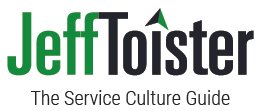I learned this tip from one of my clients, a plumbing company whose plumbers use a very effective customer service technique. They always take care to clean up the area surrounding their repair work so it has a little extra shine. This small step creates a positive impression for three reasons.
- Plumbing repairs are often necessary because of a leak or some other mess, so this extra service saves their customers some effort.
- Plumbing problems can be very stressful, so putting some extra shine on the repair helps the customer quickly feel better.
- Cleaning up the area spotlights the plumber's high level of workmanship, giving the customer the confidence that the repair was done correctly.
Not all of us regularly clean up messes as a part of our job, but there are ways we can put some extra shine on the work we do. Find that opportunity and you'll stand out too!

